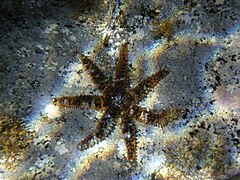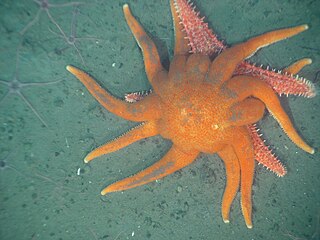
The Valvatida are an order of starfish in the class Asteroidea, which contains 695 species in 172 genera in 17 families.

The Asterinidae are a large family of sea stars in the order Valvatida.
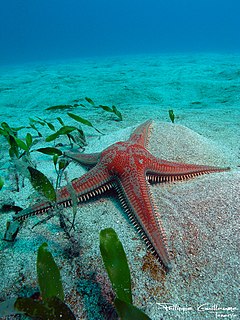
The Astropectinidae are a family of sea stars in the order Paxillosida. Usually, these starfish live on the seabed and immerse themselves in soft sediment such as sand and mud.

Astropecten is a genus of sea stars of the family Astropectinidae.

Nardoa is a genus of sea stars in the family Ophidiasteridae.
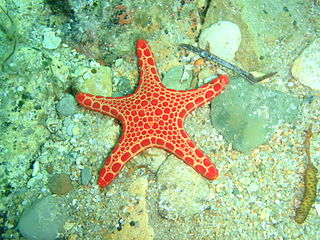
Goniasteridae constitute the largest family of sea stars, included in the order Valvatida. They are mostly deep-dwelling species, but the family also include several colorful shallow tropical species.
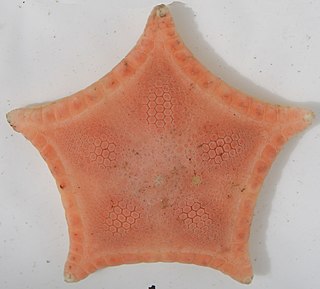
Ceramaster is a genus of cushion stars in the family Goniasteridae. The species in this genus have no arms. They live in deeper waters than most sea stars.

Henricia is a large genus of slender-armed sea stars belonging to the family Echinasteridae. It contains about fifty species.
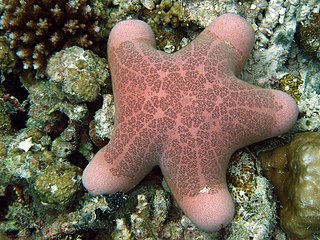
The Oreasteridae are a family of sea stars in the class Asteroidea.
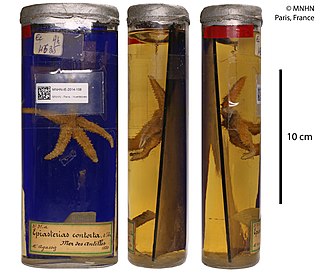
Sclerasterias is a genus of starfish in the family Asteriidae. Adult individuals have five arms but small, immature individuals have six. This led to the giving of a separate generic name to the juveniles, Hydrasterias, before it was realised that only one genus was involved. These young individuals often undergo fissiparity. The disc splits into two parts, each bearing three arms, and new arms develop on each part to complete the complement of arms. This sometimes happens repeatedly and may be an adaptation to life in cold, deep seas where most of the species are found.
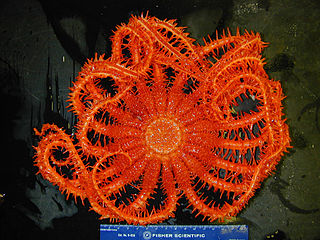
The Brisingidae are a family of starfish found only in the deep sea. They inhabit both the Atlantic and Pacific Oceans at abyssal depths, and also occur in the Southern Ocean and around Antarctica at slightly shallower depths.
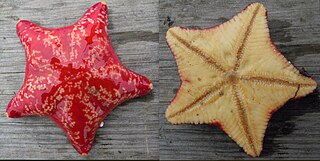
Poraniidae is a family of starfishes in the order Valvatida.

The Freyellidae are a family of deep-sea-dwelling starfish. It is one of two families in the order Brisingida. The majority of species in this family are found in Antarctic waters and near Australia. Other species have been found near New Zealand and the United States.
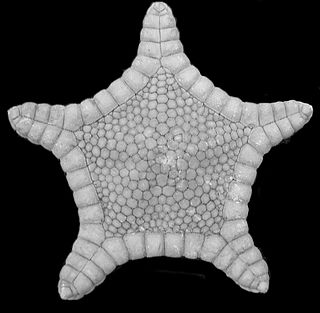
Astroceramus is a genus of abyssal sea stars in the family Goniasteridae.
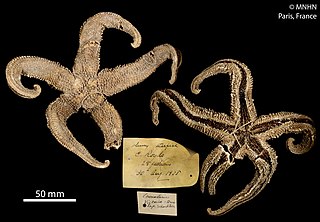
Diplasterias brucei is a species of starfish in the family Asteriidae. It is found in the Pacific Ocean and Southern Ocean. It is a predator and scavenger and is unusual among starfish in that it broods its young.

Mediaster is a genus of starfish in the family Goniasteridae. It was circumscribed in 1857 by William Stimpson for M. aequalis, the genus's type species. Its junior synonym is the genus Isaster, which was circumscribed in 1894 by Addison Emery Verrill for the species now known as M. bairdi. Verrill himself synonymized the two genus names in 1899.

Pteraster is a genus of sea stars in the family Pterasteridae.

Freyella is a genus of deep-sea-dwelling starfish in the order Brisingida.

Coscinasterias muricata is a species of starfish in the family Asteriidae. It is a large 11-armed starfish and occurs in shallow waters in the temperate western Indo-Pacific region.




